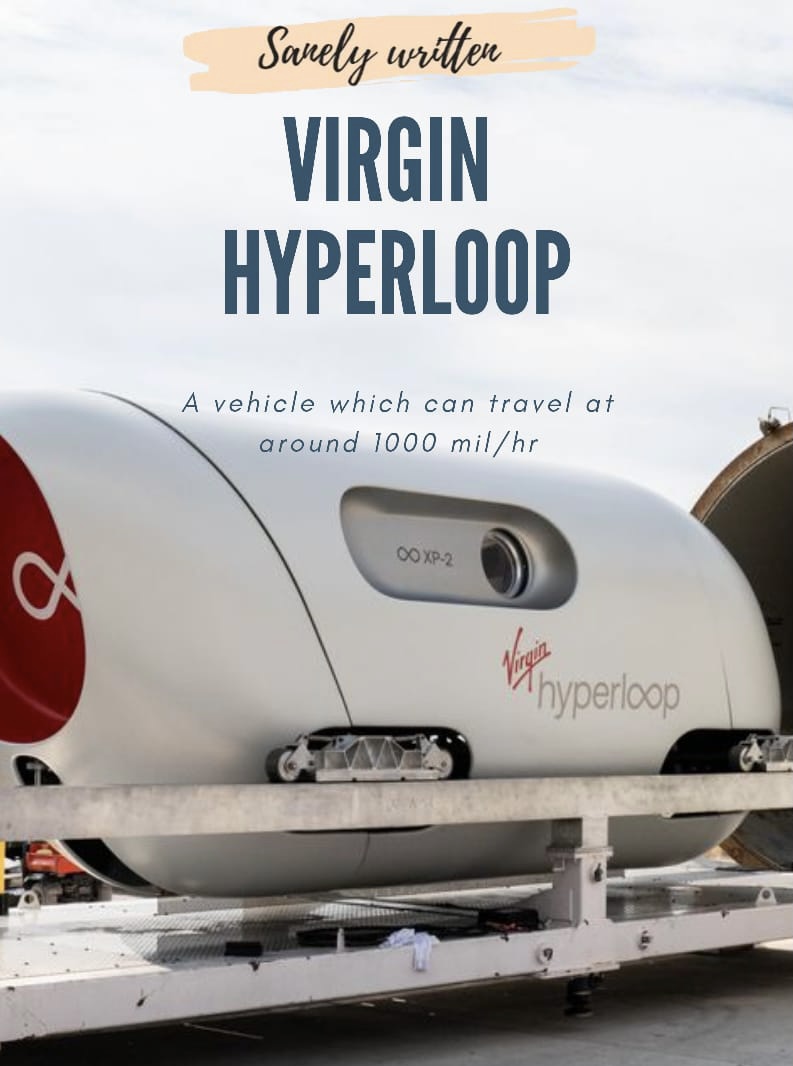In a historic first, two passengers embarked on a high-speed hyperloop train on
• Sunday (November 8,2020) evening at the Virgin Hyperloop’s 1,640-foot DevLoop test track in Las Vegas, Nevada. Clearly, Virgin Hyperloop was confident in the trial, because the two passengers onboard were Josh Giegel, its chief technology officer and cofounder, and Sara Luchian, the company’s head of passenger experience.
• To vet the manned pilot—and to ensure these high-speed trains can safely carry people and cargo in the future—Virgin Hyperloop has hired Certifier Group, a French company that specializes in independent rail assessment, to oversee testing. Previously, Virgin Hyperloop has run about 400 unmanned tests of the system.
• Among other safety features, the company’s XP-2 pod—also known as the “Pegasus Pod,” which will eventually seat up to 28 passengers in commercial vehicles—uses “state-of-the-art” control systems that can detect “off-nominal states and rapidly trigger appropriate emergency responses,” according to Virgin Hyperloop. And while inside, the passengers donned five-point harness seatbelts, just like the ones you’d find in a race car.
• The underlying technology, of course, is a combination of pneumatic tubes and contactless levitation. Like current maglev (magnetic levitation) trains, hyperloop pods will benefit from frictionless motion, with two sets of magnets working together to repel and push the train off from the tracks and forward, creating a floating effect.
• Meanwhile, a system of sealed tubes—that’s the DevLoop test track, in this case—connects cities. The pressurized pods move at high speeds due to both the magnetic levitation properties of the track and the pneumatic propulsion systems, which work a bit like the vacuum systems you use to send checks and deposit slips to the teller at a bank’s drive-through.This enables Virgin Hyperloop’s pods to propel passengers or cargo pods at speeds in excess of 1,000 kilometers per hour, or about 621 miles per hour.
• That’s roughly three times as fast as the Shinkansen bullet trains that make up Japan’s extensive high-speed rail network, and 10 times faster than traditional trains. For comfort and safety reasons, this test was limited to a speed of about 107 miles per hour, making the trip feel more like a ride on the subway for Geigel and Luchian.
• This builds on an October 8 announcement that Virgin Hyperloop will build a $500 million certification center in West Virginia for testing and development of the technology—a vital move, considering the city-to-city rail network remains unproven. The company hopes that with this hub, it can achieve certification by 2025 and commercial travel by 2030.
• But Virgin Hyperloop’s concept doesn’t exist in a bubble; there are plenty of competitors in the pneumatic maglev transport space.
• For example, Magway, a U.K.-based transport startup, wants to use fleets of tiny, metallic pods—too small to comfortably sit in—to deliver your Amazon packages, or perhaps your groceries, through an underground system of tubes.
• Meanwhile, the Los Angeles-based Hyperloop Transportation Technologies (HTT) is taking an open-source approach to pneumatic maglev trains, using a crowd collaboration approach to develop the transport system. In practice, that involves a consortium of engineers from across the globe, working together.
• Back in July, HTT secured an official classification under the U.S. Department of Transportation, which should expedite funding and regulation talks for hyperloop technologies. Notably, this also applies to other hyperloop firms, like Virgin Hyperloop; all of these companies will fall under the purview of the Federal Railroad Administration.
• And of course there’s Elon Musk’s The Boring Company, which completed the second tunnel for its underground people-mover system at the Las Vegas Convention Center earlier this year. When The Boring Company announced that part of the project was finished back in May, it noted the Las Vegas loop was still on track for a January 2021 opening date, despite the COVID-19 pandemic. It’s unclear if those plans have changed at all since then.
• So will we really get a hyperloop system from any of these companies by the turn of the next decade? Only time will tell. But we think a heavy dose of skepticism is always in order.



